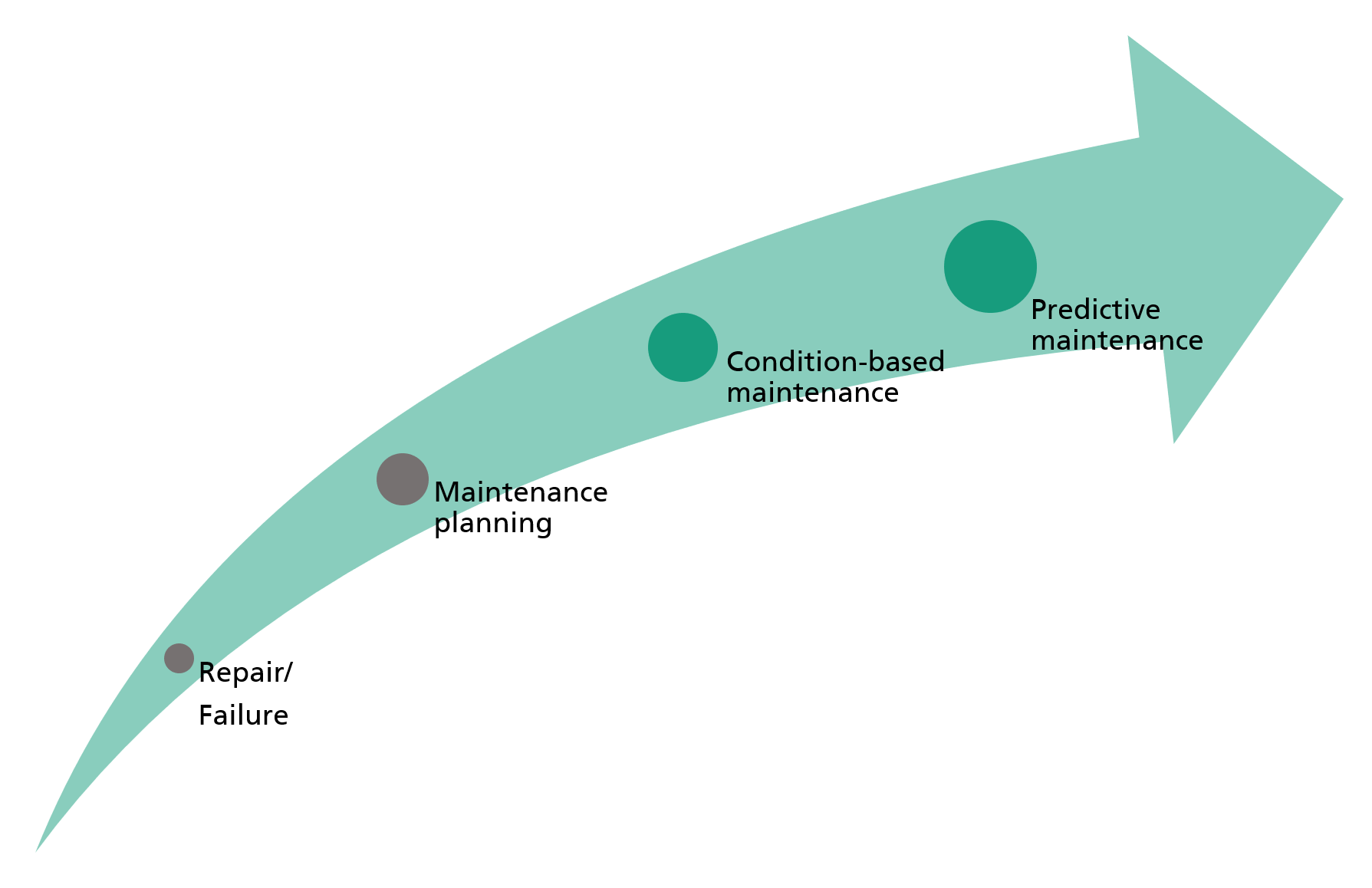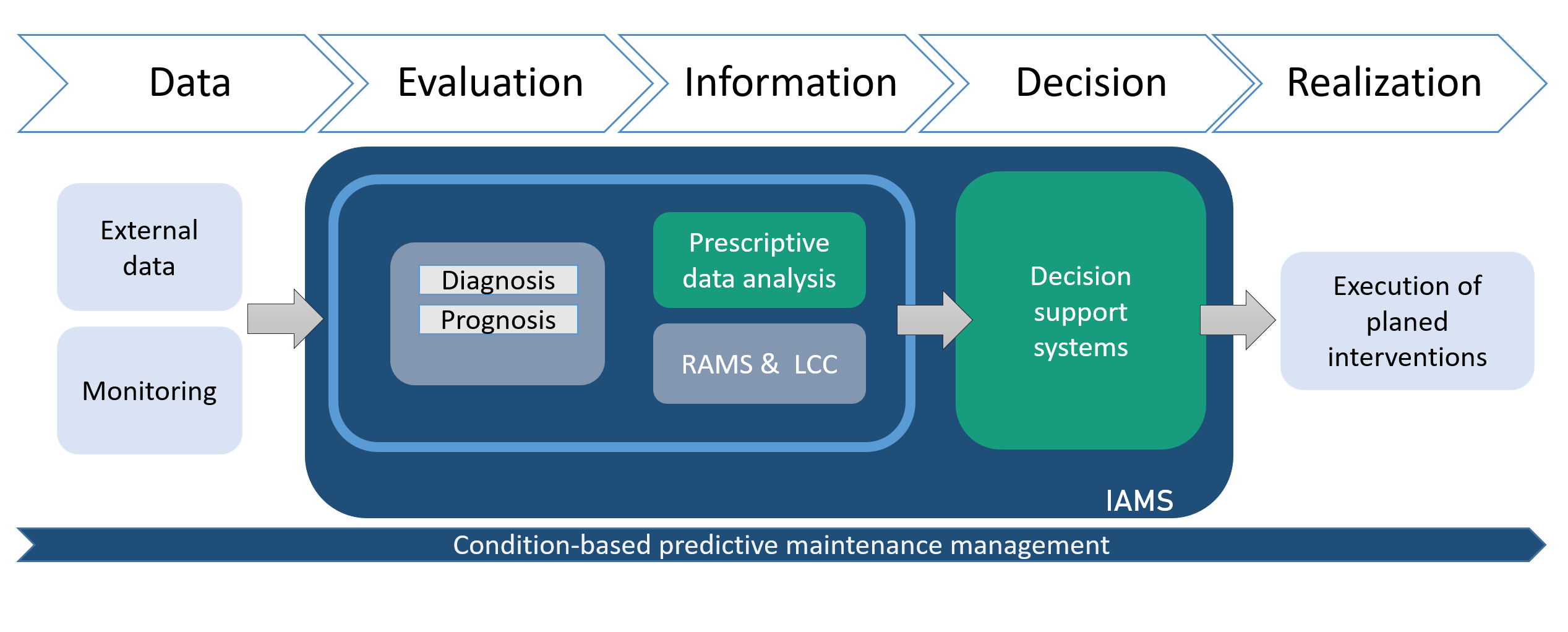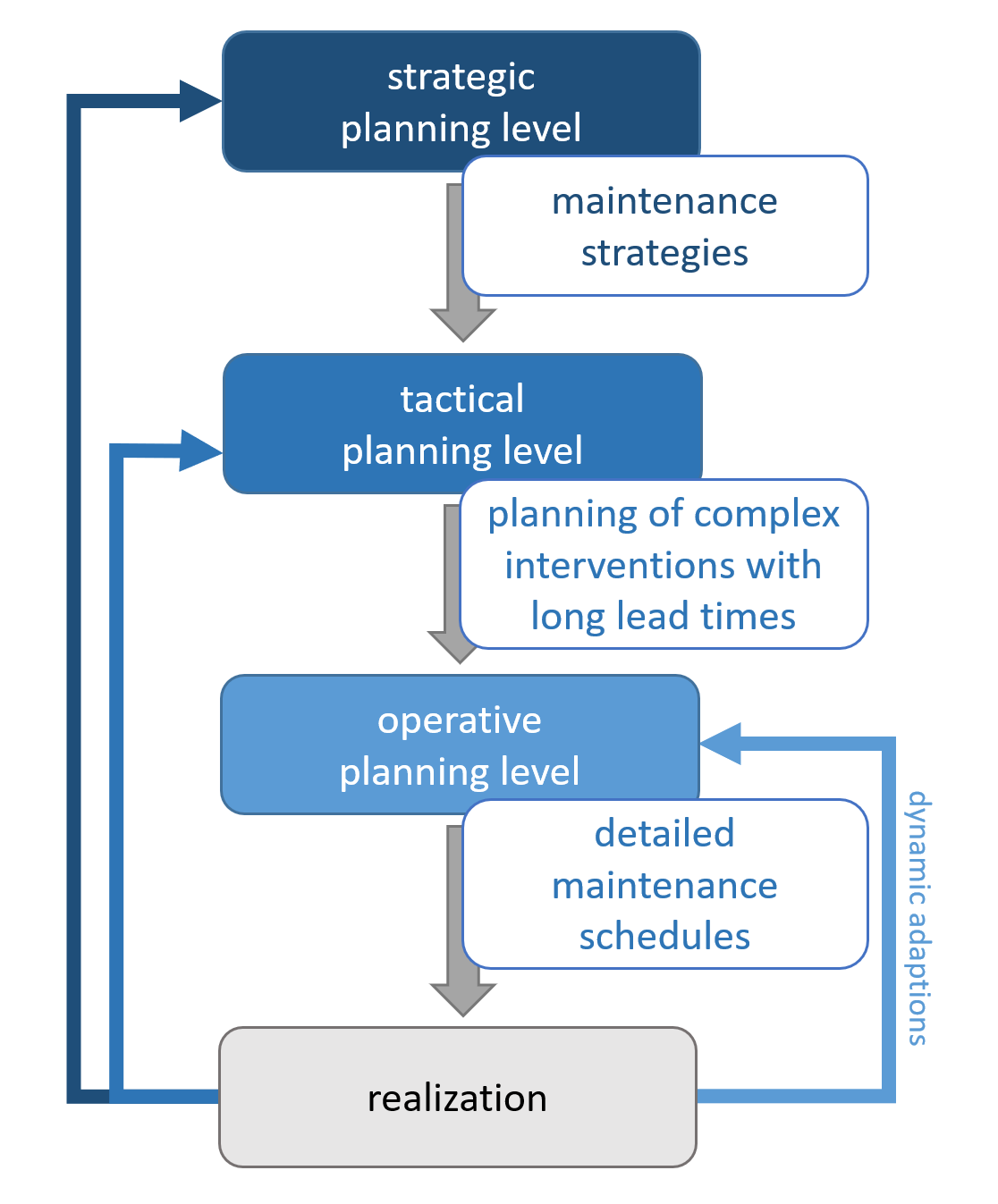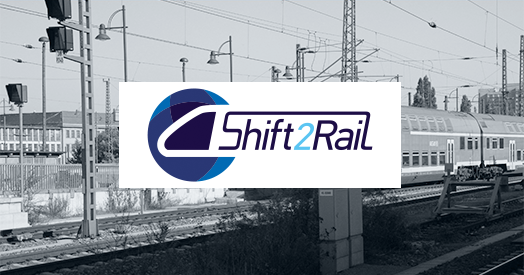Condition-Based Predictive Maintenance
The use of new technologies in the field of sensor technology and the targeted application of data analysis methods is intended to make plant maintenance more efficient and cost-effective. Ideally, the maintenance interval is then selected so that an incipient fault can be detected, but this has not yet led to a failure. Predictive condition-based maintenance is intended to avoid both unnecessary maintenance work and failures.



